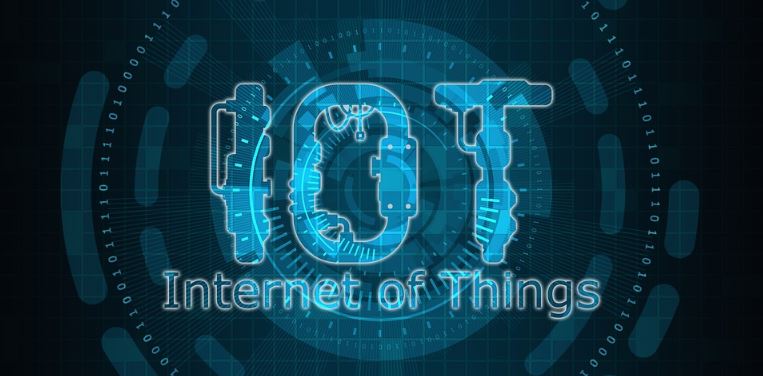
The landscape of our daily lives is undergoing a profound transformation, driven by the advent of the Internet of Things (IoT) and the intricate realm of IoT software development. From automated vacuum cleaners to intelligent climate controllers and autonomous vehicles, we find ourselves amidst a revolution that redefines the way we interact with ordinary objects.
What is the Internet of Things?
The Internet of Things (IoT) stands as a groundbreaking concept, representing the interconnection of everyday objects to the internet. This connectivity facilitates the seamless exchange of data, introducing users to unprecedented levels of functionality and automation. Beyond the familiar Fitbit fitness trackers and Nest smart home appliances, the IoT is quietly infiltrating uncharted territories, promising innovations yet to be fully realized.
Intriguingly, the potential of the IoT and IoT software development stretches far beyond current applications. The prospect of a future laden with remarkable advancements spans diverse domains, including smart cities, healthcare, energy management, and beyond. As we navigate this transformative journey, our world undergoes reshaping in ways that were once mere figments of imagination.
How Do Connected Products Work?
At its core, the IoT involves the meticulous interweaving of everyday objects with the internet. This connection enables the exchange of data, offering a myriad of possibilities, from automation and enhanced user experiences to meticulous monitoring and advanced analytics. The array of items eligible for integration into the IoT spans from commonplace household gadgets and wearables to complex industrial machinery and vehicles. Essentially, any object capable of improvement or enhancing user experiences through connectivity becomes a prime candidate for integration into the IoT ecosystem.
When innovators identify opportunities to infuse connectivity into everyday items, their development teams embark on a journey of exploration. The task involves discerning the functionalities that merit integration and devising means to achieve improvement. This journey unfolds by integrating a network of sensors, actuators, communication technologies, and other essential components within the device.
A Simplified Breakdown of IoT Operation:
- Sensors: IoT devices are equipped with a plethora of sensors, including temperature sensors, motion detectors, and GPS receivers, actively collecting data from their surroundings.
- Data Processing: The collected data undergoes processing, either locally within the device or on a central server. This analysis encompasses identifying patterns, detecting anomalies, and making decisions based on predefined rules or machine learning algorithms.
- Communication: Various communication protocols, such as Wi-Fi, Bluetooth, Zigbee, and cellular networks, are employed for transmitting data to central servers, other devices, or directly to users.
- Centralized Control: Centralized systems, typically hosted in the cloud, receive and process data from multiple IoT devices. These systems monitor device status, trigger actions, and furnish users with real-time insights through interfaces or applications.
- Actuators: In addition to data collection, IoT devices often feature actuators, enabling them to take actions based on the processed information. For instance, a smart thermostat adjusts the temperature based on occupancy and user preferences.
Connected Software Development
While the hardware components form the foundation, it is the software that animates IoT devices, shaping their capabilities and functionalities. IoT software development emerges as the linchpin, ensuring quality user experiences and influencing various aspects of device operation.
Key Aspects of IoT Software Development:
- Positive User Interaction: A well-designed user interface is paramount for seamless interaction, whether through mobile apps, web portals, or device displays.
- Effective Data Collection + Presentation: Software should not only proficiently analyze collected data but also present it in a clear, comprehensible manner, empowering users to derive valuable insights.
- Ensuring Accessibility: From the outset, accessibility considerations are paramount, ensuring that the device’s interface is usable by a broader audience while adhering to inclusivity and compliance standards.
- Security: Robust security measures, including data encryption, secure authentication, and protection against vulnerabilities, are imperative to shield connected devices from cyber threats.
- Cross-Device Integration: Good software development prioritizes compatibility and seamless interaction across a spectrum of devices, platforms, and services.
- Performance and Efficiency: Efficiency is the cornerstone of IoT software development, particularly for real-time applications. Optimal code design minimizes energy consumption, contributing to a seamless and responsive user experience.
As the IoT continues its transformative journey, consumers increasingly expect smart features in their purchases. From intelligent home assistants to health monitoring through wearable trackers, connected technology enhances daily experiences. This shift is not merely a response to consumer demands; it is a strategic necessity for companies aiming to thrive in an evolving landscape.
For those contemplating the development of software for IoT devices, a deeper understanding of IoT software development is essential. Our comprehensive guide, “Navigating Connectivity: The Definitive Manual on IoT Software Development,” provides invaluable insights, accompanied by the 9 Essential Guidelines for IoT Software Development and Connected Technology. Download it today and delve into the intricate world of IoT software development.
Interesting Related Article: “What is the IoT or the Internet of things? Definition and examples“
